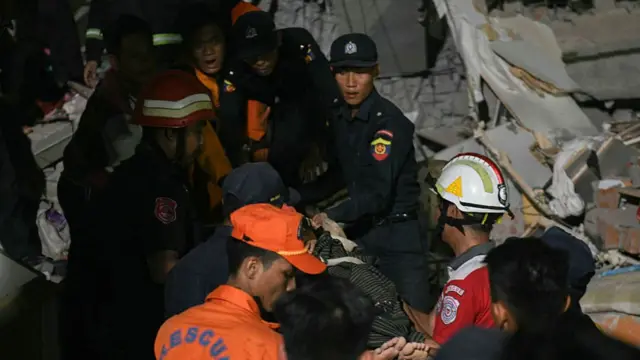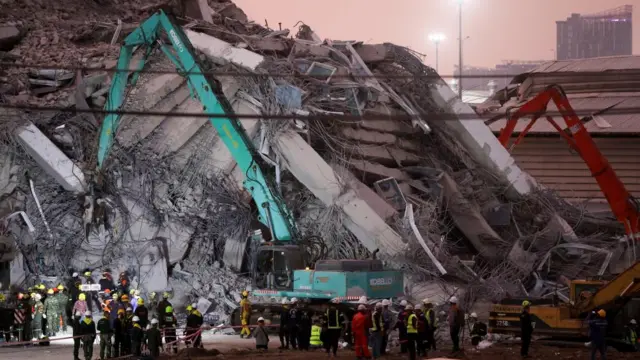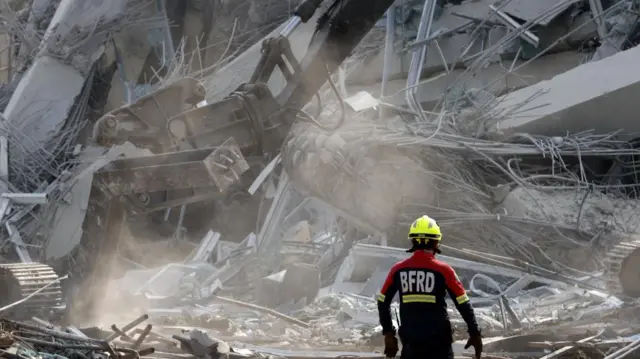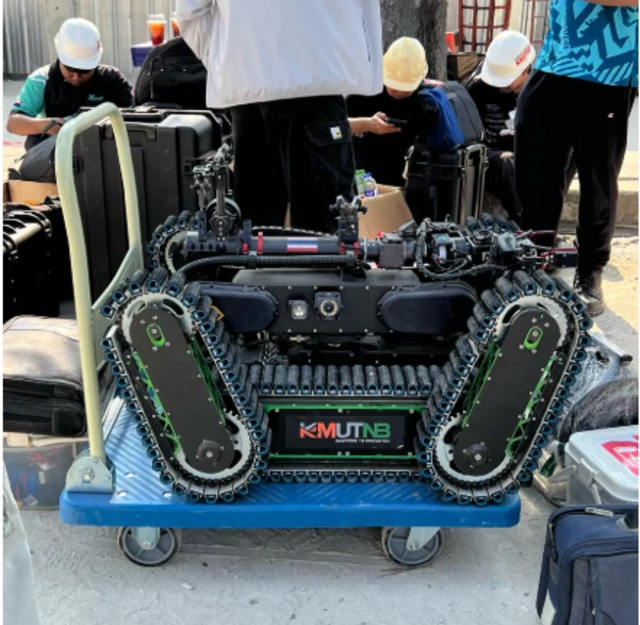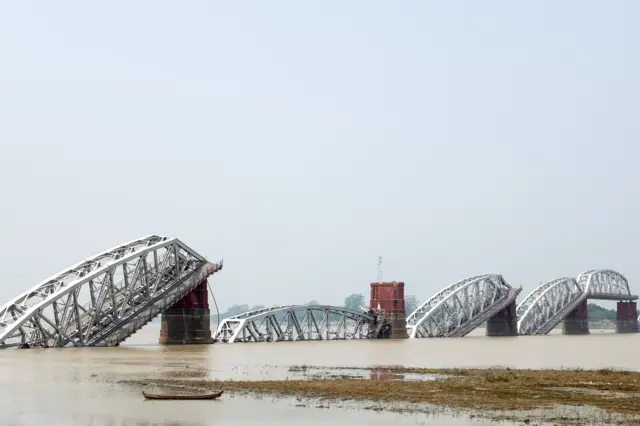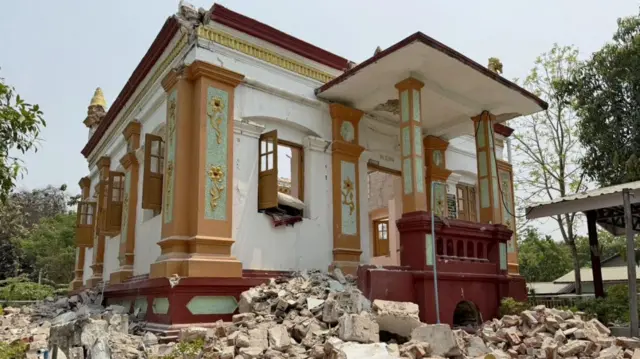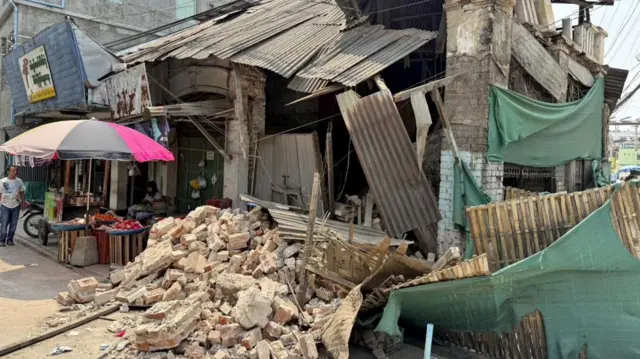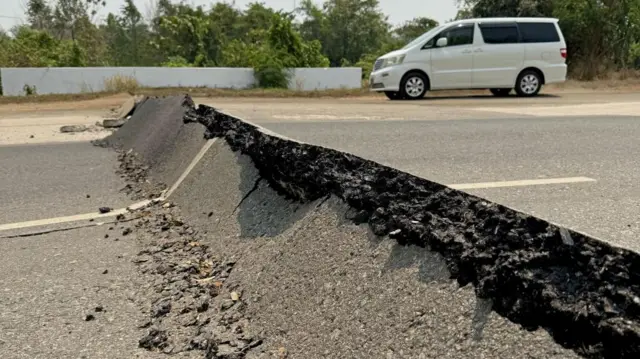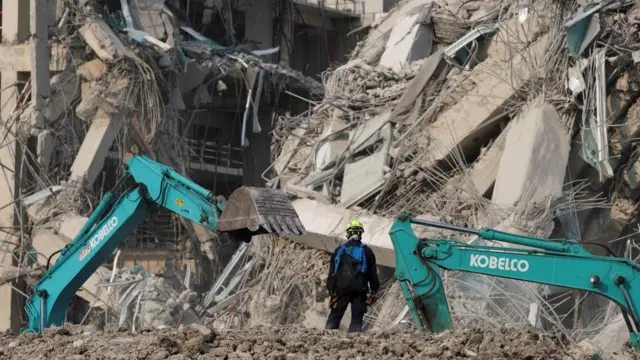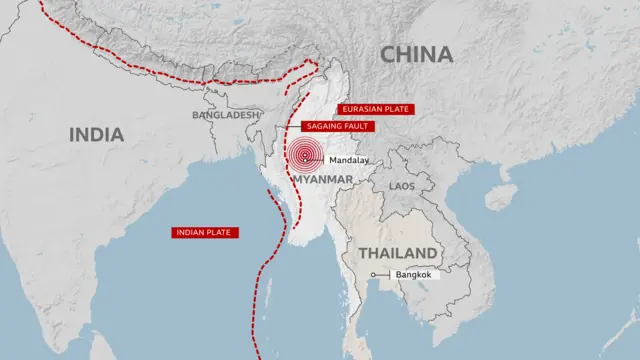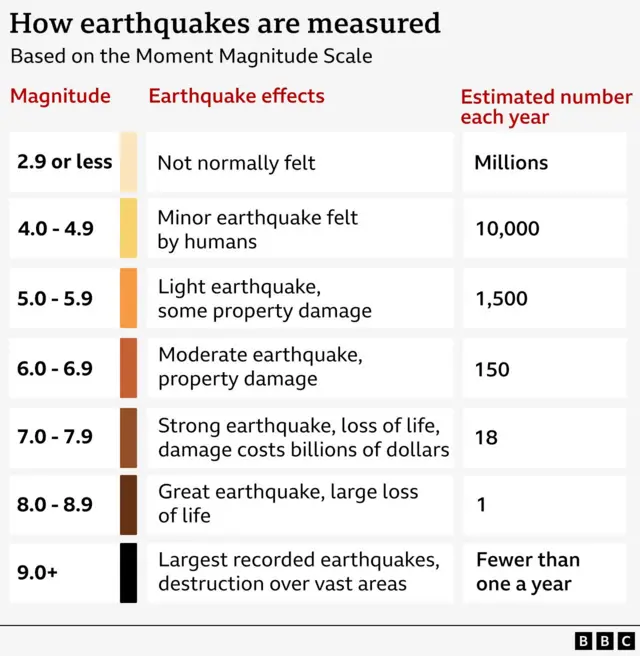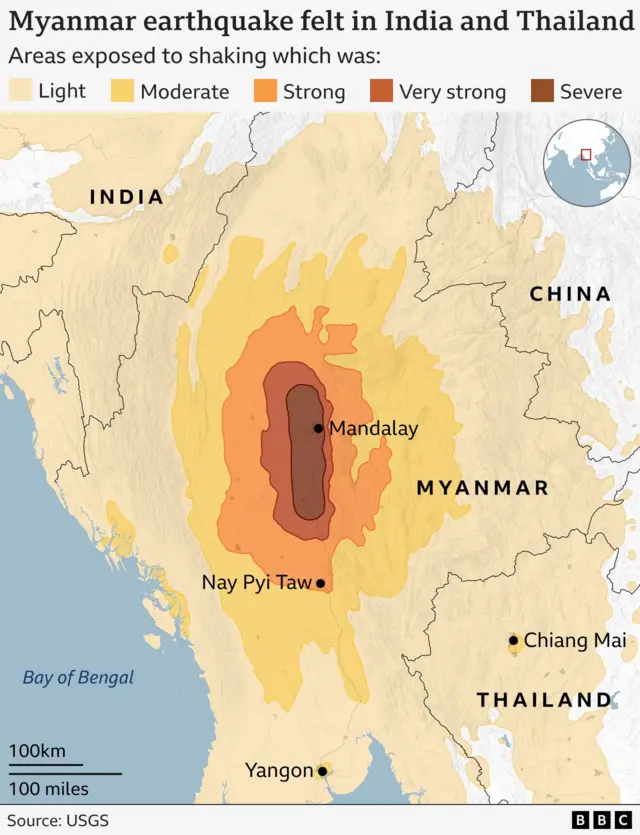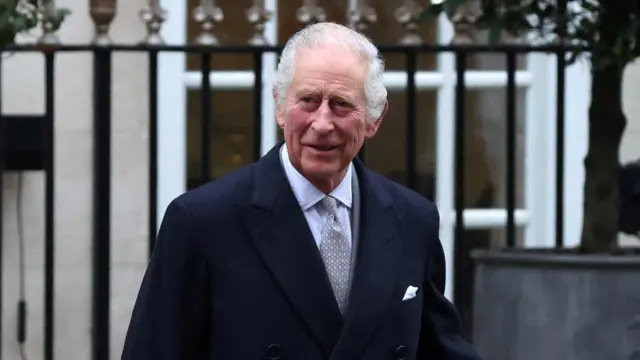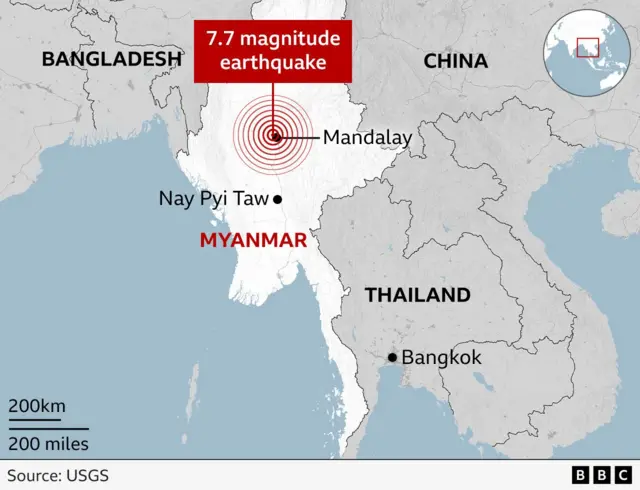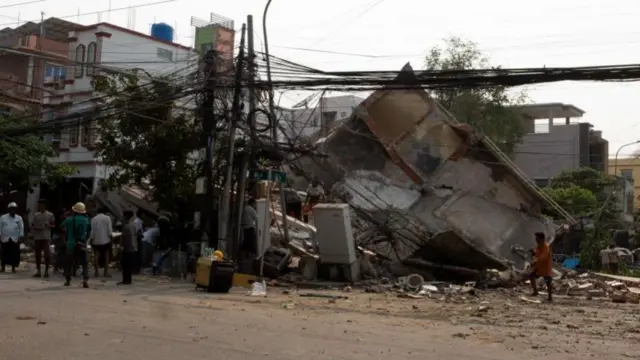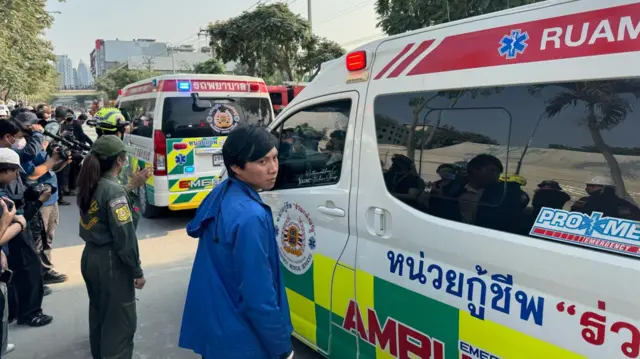Over 1,600 dead in Myanmar earthquake as military air strikes reported near epicentrepublished at 15:00 GMT 29 March
 Jamie Whitehead
Jamie Whitehead
Live reporter
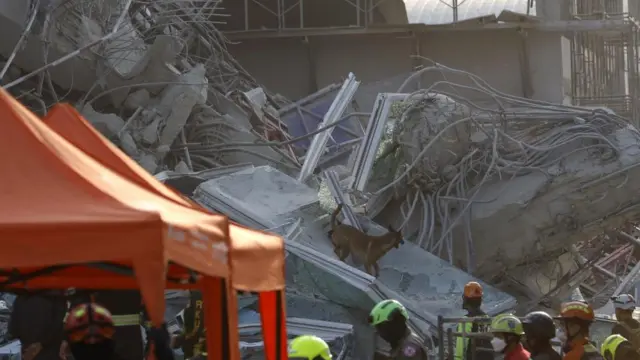 Image source, EPA
Image source, EPAAt the moment, 1,644 people are known to have died in the devastating earthquake which hit Myanmar on Friday, the strength of which was so severe the quake was felt in neighbouring countries Thailand and Pakistan.
As rescue operations continue in both Myanmar and Thailand, here's a quick roundup of the latest lines:
- Myanmar's military leadership says 3,408 people there are injured as as result of the earthquake, with 139 still missing
- Ten people have died, 42 have been injured and 78 are missing in Bangkok
- In Mandalay, the city closest to the epicentre of the earthquake, 90 people are thought to be trapped under an apartment building. Over 1,500 homes have been damaged in the region
- But the AFP news agency is reporting that a woman was pulled from the rubble alive after being trapped for 30 hours
- As authorities in Myanmar desperately search for survivors, the People's Defence Force has reported air strikes by the military near the epicentre of the earthquake
- And in Bangkok, robots have been bought in to assist with the rescue efforts
We'll be continuing our coverage from our newsroom in London in collaboration with BBC Burmese in Yangon and reporters in Bangkok, so stick with us.
